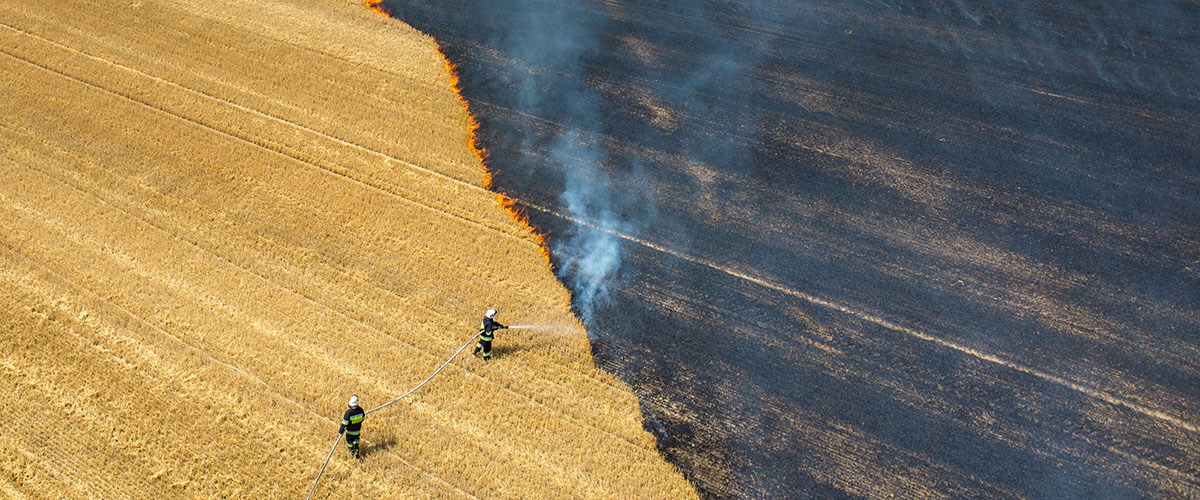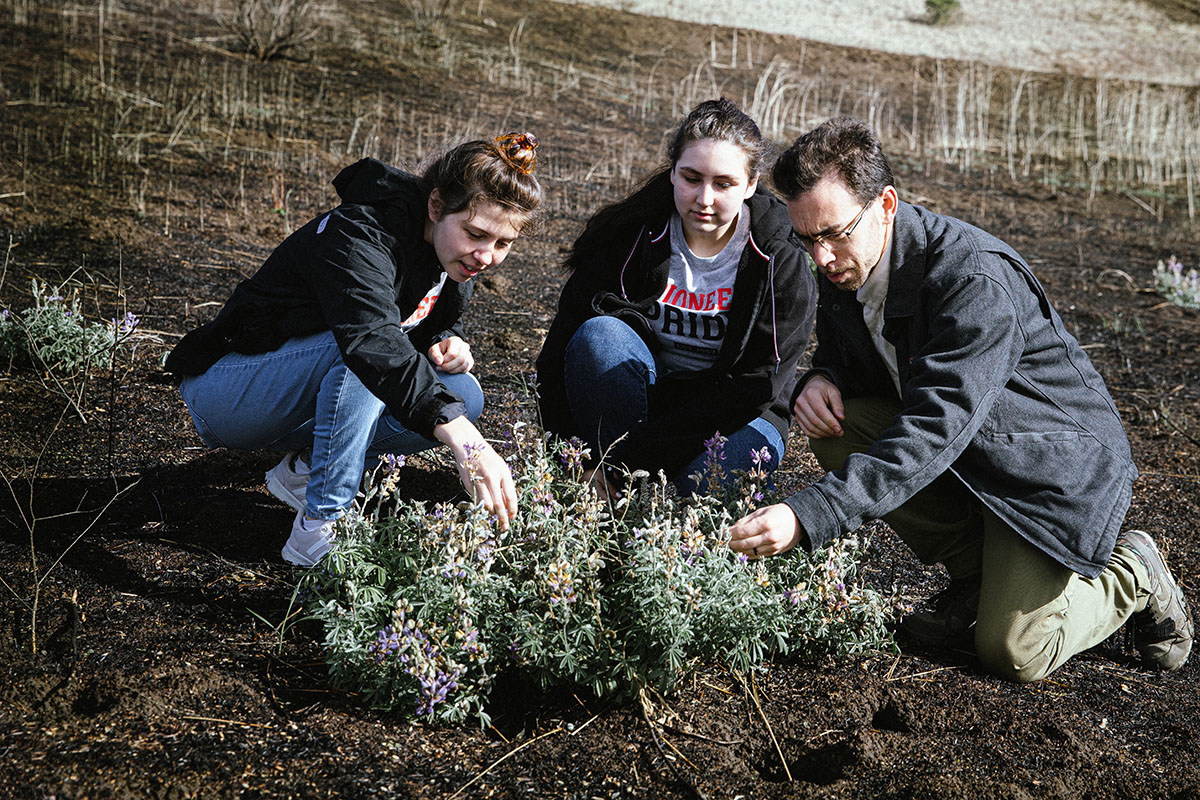Wildfire Mitigation

How Cal State East Bay faculty and students are helping reduce the threat of wildfires using indigenous practices.
It’s an early October morning in San Jose, where Cal State East Bay senior Rachel Garcia is getting ready for the day. That usually means popping in the car and commuting about an hour to the university’s Hayward campus. Today, since it’s a Wednesday, Garcia is packing a lunch, wearing jeans and boots, and gathering outerwear options for a longer trek.
She’ll need the layers when she arrives at Bouverie Preserve, less than 10 minutes from the town of Sonoma. There, as she has every Wednesday for the past several weeks, she’ll spend the day hiking through underbrush while collecting data on the 535-acre ranch’s oak tree woodland and acorn production.
It’s the starting point for what Assistant Professor Tony Marks-Block of Anthropology, Geography & Earth Sciences says will be a multiyear initiative to study the benefits and impacts of prescribed fire on local ecological and environmental systems. With funding from a Faculty Support Grant, Marks-Block and co-collaborator Peter Nelson, a Coast Miwok assistant professor at UC Berkeley (and citizen of the Federated Indians of Graton Rancheria), have established a partnership with the conservation organization Audubon Canyon Ranch, whose properties include Bouverie Preserve.
Through Audubon Canyon Ranch’s Fire Forward program — one of several ways the nonprofit seeks to combat climate change — researchers and private and public stakeholders are investigating how a region beset with devastating wildfires can become a “model of fire-adapted communities tending fire-adapted landscapes.” Marks-Block is particularly interested in leveraging the practices of native tribes, who he says represent a rich knowledge base that is being ignored.
 “Native people already have sophisticated knowledge of how to manage the land in California, but they are marginalized from existing political systems, including hegemonic science, which privileges certain ways of knowing about the environment over others,” Marks-Block said. “For a long time, it was very difficult to study the effects of prescribed fire because of all the political obstacles to setting prescribed burns, up until the last five years or so.”
“Native people already have sophisticated knowledge of how to manage the land in California, but they are marginalized from existing political systems, including hegemonic science, which privileges certain ways of knowing about the environment over others,” Marks-Block said. “For a long time, it was very difficult to study the effects of prescribed fire because of all the political obstacles to setting prescribed burns, up until the last five years or so.”
Marks-Block, who was raised in the Bay Area and has worked with indigenous peoples of California throughout his career, sees the Fire Forward program as an important opportunity for mainstream policymakers and agencies to support the research and management priorities of indigenous peoples.
“The quantitative approach is given more priority and saliency in management decision-making in California, so this partnership represents a deliberate attempt by native peoples and tribes to engage in that process,” he said. “It’s an intentional part of our collaboration to honor indigenous knowledge-holders and support their management goals, while translating those techniques into data for California’s decision-makers.”
Acorns are an entry point into that understanding. They are a key food resource for California’s native communities, both historically and today. But when not managed properly with fire, they are prone to increased insect infestation that renders them useless for harvest. Eliminating prescribed fire from the landscape has also increased the accumulation of understory woody fuel that can accelerate the spread and severity of wildfire.
As one small step to getting closer to native land management techniques, students have been collecting data on Bouverie Preserve’s oak trees to prepare for a prescribed fire event.
“We’re taking data from a control group of trees to assess pre- and post-data from prescribed fire,” Garcia said. “We’ve built acorn traps out of plastic bins with netting over the top to capture the acorns that fall from the trees and created transect lines from the trees to understand where acorns fall. We’re gathering data on tree canopy spread, tree diameter at breast height, and mapping nearby trees so we can come back after the prescribed fire to compare our data.”
Marks-Block adds that gathering enough data will require applying prescribed fire frequently over several years, as indigenous peoples have done for millennia. However, oak trees are victims of climate change along with the rest of the environment, so the specific timing that indigenous peoples would have applied prescribed fire to decrease pests and increase acorn production, is also in question.
“Most oak trees will drop infested acorns before non-infested acorns first, so if we time the burn to disrupt the life cycle of the pests, our hypothesis is that we’ll see less infestation in future years and more efficient harvesting,” Marks-Block said. “Studying the phenology of these trees is also helping us understand how the life cycle of native food resources are being impacted by climate change and events like drought. If we apply fire at a time of year when it will not spread rapidly and result in loss of life and destruction of property, then wildfire will not be as severe of a threat in California and fire fighters will be able to control wildfire more easily.”
Garcia, who will graduate next spring, believes the field work as well as what she’s personally learning will have lasting impacts.
“This project is so important to climate change,” she said. “People are very scared and shy away from the idea of fire, which as a Californian, I totally understand. But they also don’t get to explore how the application of fire has been a huge benefit to the people who know how to leverage it. Indigenous people have used fire to grow crops, manage the land, and even mark territory. It’s this unique relationship with fire, a respect for it and understanding of how to coexist with it. It’s unfortunate that a lot of historical neglect has prevented us from learning about fire and using it to manage the land.
“Cal State East Bay is providing me with so many hands-on opportunities,” she continued. “I feel like yes, I’m getting my anthropology degree, but I’m actually practicing anthropology. I have this confidence in my degree that I’m learning practical applications that will be valuable to anything I want to do in the future.”